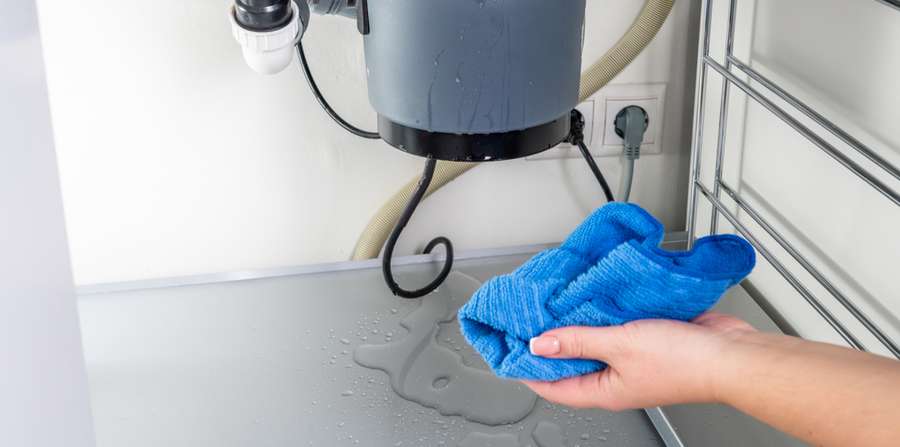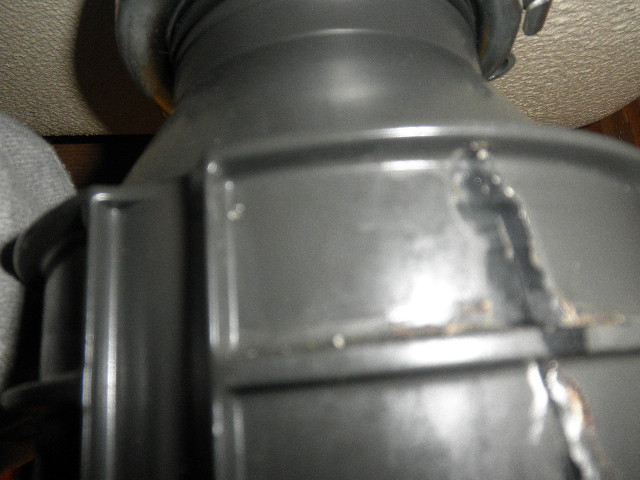Quick Fixes for a Dripping Garbage Disposal
Quick Fixes for a Dripping Garbage Disposal
Blog Article
This great article following next relating to Garbage Disposal Leaking From Bottom is immensely motivating. Try it and draw your own ideas.

Garbage disposals are necessary kitchen area appliances that help in getting rid of food waste effectively. Nevertheless, a dripping waste disposal unit can be a discouraging and untidy issue to deal with. Fortunately, numerous leaks can be repaired easily with a few simple actions. In this post, we will review how to deal with a leaking waste disposal unit efficiently.
Introduction
Waste disposal unit are installed under kitchen area sinks and are developed to shred food waste into smaller items, enabling it to pass through the plumbing system easily. While these devices are generally trustworthy, leakages can take place over time because of wear and tear, loosened connections, or damage to the unit.
Step-by-Step Overview to Repairing a Leaking Waste Disposal Unit
Switch off the Power
Prior to trying any kind of repairs, guarantee that the power to the garbage disposal device is shut off to avoid the danger of electrical shock.
Situate the Leakage
Recognize the precise location of the leakage and figure out the cause
Tighten Links
Make use of a wrench to tighten up any type of loosened connections between the disposal device and the plumbing system.
Change Seals or Gaskets
If the leak is because of used seals or gaskets, get rid of the old parts and change them with brand-new ones.
Patching Fractures or Openings
For cracks or openings in the disposal system, use epoxy or an appropriate patching material to seal the broken location.
Determining the Resource of the Leakage
Prior to trying to fix a dripping garbage disposal, it is essential to recognize the resource of the leak. This can normally be done through visual evaluation or by performing basic examinations.
Visual Evaluation
Examine the garbage disposal system carefully for any type of indications of water leak. Pay very close more info attention to areas around seals, gaskets, and connection factors.
Checking for Leakages
One means to evaluate for leaks is by running water with the disposal device and looking for any noticeable indicators of leakage.
Typical Causes of Leaks in Waste Disposals
Worn Seals and Gaskets
Seals and gaskets play an important duty in protecting against water from leaking out of the waste disposal unit. Gradually, these parts can wear away, leading to leaks around the disposal system.
Loose Links
The links in between the garbage disposal and the pipes system can come to be loose with time, creating water to leakage out throughout procedure.
Fractures or Holes in the Disposal Unit
Physical damages to the garbage disposal, such as cracks or holes in the housing, can also cause leakages.
Tools and Materials Needed for Taking Care Of a Leaking Garbage Disposal
Prior to starting the fixing process, gather the required devices and products, consisting of a screwdriver, adjustable wrench, plumbing professional's putty, replacement seals or gaskets, and epoxy or patching product for fixing cracks or openings.
Testing the Garbage Disposal After Repair Service
Once the repair service is total, check the garbage disposal by running water through it to make sure that the leakage has actually been solved.
Preventive Upkeep Tips to Avoid Future Leakages
To stop future leakages, it is important to do normal maintenance on your garbage disposal. This includes maintaining it tidy, preventing placing non-food things or hard things down the disposal, and occasionally looking for leakages or other problems.
Final thought
In conclusion, taking care of a dripping waste disposal unit is a fairly straightforward procedure that can be completed with basic tools and materials. By complying with the steps detailed in this article and practicing preventive upkeep, you can maintain your garbage disposal in good working problem and stay clear of expensive repairs in the future.
What to Do About a Leaking Garbage Disposal
A leaking garbage disposal often goes unnoticed until you confront a sopping cabinet, a foul-smelling puddle, or an audible drip-drip-drip from the unit. The fix can be frustrating, too, because the leak can stem from a number of components in the system. Fortunately, with a little sleuthing, you can zero in on the leak and—depending on the exact location—stop the icky oozing and repair the component that caused it. Worst case scenario, if it turns out that the garbage disposal must be replaced, installing a new one is a reasonable do-it-yourself task for those with basic plumbing skills. Read on to keep the cash you’d otherwise hand over to a pro.
Prepare to find the leak
Prior to testing the garbage disposal for leaks, unplug it at the wall outlet and turn off the power from the breaker box to prevent electrical shock. Then insert a watertight sink stopper into your sink drain and wipe the unit dry with a clean cloth. In any handy container, mix a few drops of food coloring into a few cups of water, and pour the dyed water onto the sink stopper to help you locate the leak.
Investigate the source
the top, where the disposal meets the sink drain the side, where the dishwasher hose or main drain pipe connects to the disposal or the bottom of the unit Inspect each of these locations while gliding a light-colored rag over the unit; the dyed water will readily show on the rag and reveal the location of the leak. If a leak isn’t immediately apparent, remove the sink stopper and pour a few more cups of dyed water down the sink drain, then check for leaks again. Leaks near the top of the unit are more likely to show themselves while the sink is plugged, while side and bottom leaks are more noticeable while the sink is unplugged.
The metal sink flange that sits directly inside the sink drain is typically sealed around the top with plumber’s putty (a clay-like sealant) and then secured from under the sink with bolts. If the plumber’s putty deteriorates, or the bolts loosen, the flange can no longer form a watertight seal between the sink drain and the disposal—which could cause a leak at the top of the unit.
To reseal the leaky flange, you must first detach the garbage disposal. Start by loosening the screws securing the main drain pipe to the disposal, then loosen the screws in the metal clamp securing the dishwasher hose to the disposal and detach the drain pipe and dishwasher hose from the disposal. Loosen the screws in the mounting ring that connects the disposal to the metal mounting assembly beneath the sink, then pull down the disposal and carefully set it on a clean, dry surface. Loosen the bolts in the mounting assembly with a wrench, then pull down the mounting assembly and set it near the disposal.

I'm very intrigued by Why Is and I'm hoping you enjoyed reading the entry. Liked our piece? Please share it. Let other people discover it. Bless you for your time. Don't forget to pay a visit to our blog back soon.
View More Report this page